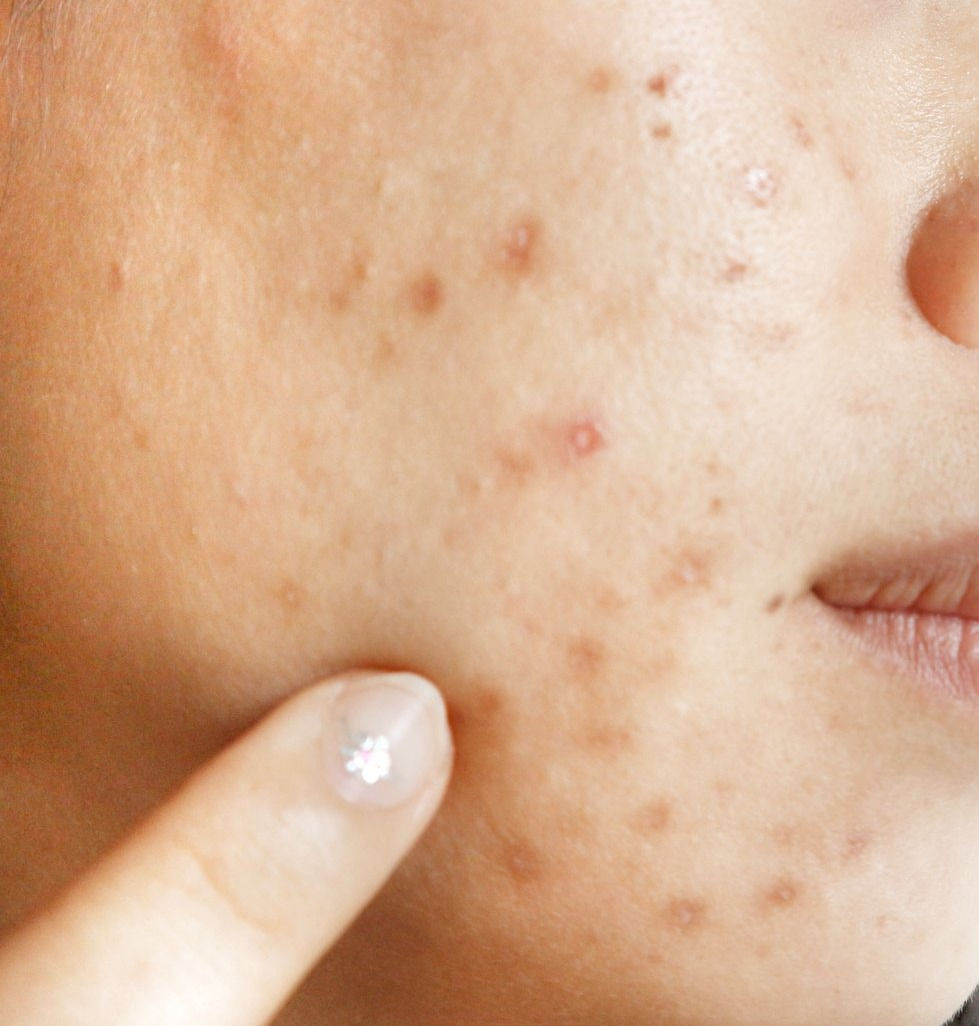Identify Acne Scars, What's the Best Treatment?
- Wita Zella
- Oct 18, 2022
- 3 min read

Acne is one of the common skin conditions that annoy the sufferer, not only when they appear, acne is frequently leaving a mark or scar behind. Usually, acne only lasts for several days, but acne scars or acne marks can stay for a long time and even be permanent. Just like treating acne, acne scars or marks should be treated based on the type and severity.
Through this article you will find out types of acne scars, acne marks, and how to treat them according to a dermatologist.
1. Superficial Macular Scars (Hyperpigmentation)

Superficial macular scars or known as hyperpigmentation is acne marks that are characterized by uneven skin color. Acne marks occur after inflammatory acne in the form of red, brown, or dark marks. This type of hyperpigmentation can be divided into Post-Inflammatory Hyperpigmentation and Post-Inflammatory Erythema. What's the difference between PIH and PIE?
Post-Inflammatory Hyperpigmentation (PIH)
Acne marks PIH generally show up as brown or dark color due to overproduction and deposition of melanin to the skin in response to inflammation. To prevent PIH gets worse, applying sunscreen during daylight is mandatory.
Post-Inflammatory Erythema (PIE)
Has different color of discoloration, PIE occurs as red or pink marks caused by blood vessel damage within inflamed skin. To prevent PIE gets worse, avoiding picking at the pimples is a must.
Overall, both of these acne marks have flat characteristics, blend with the skin but with different colors, creating discoloration. Although categorized as mild condition, acne marks is not easy to solve without proper treatments.
Treatment for Acne Marks
To treat acne marks such as PIH and PIE, a dermatologist recommends to use topical cream, especially a night cream with certain ingredients that are effective in reducing hyperpigmentation regularly. In addition, peeling and laser can be aggressive option in solving the discoloration.
2. Keloid and Hypertrophic

Keloid or hypertrophic scars is raised lesions of scar tissue on the surface of the skin, forming red bumps. Keloid or hypertrophic happens due to the overgrowth of fibrous tissue in the area where the acne lesion arises or simply caused by increased collagen during healing process. Somehow, the formation of keloid and hypertrophic depends on how the skin heals. If someone tends to scar easily then the risk of getting this scar is high.
Treatment for Keloid and Hypertrophic Scars
In contrast to hyperpigmentation, in the treatment of raised lesions, the doctor will solve pimples that are still rooted in the skin by doing TA injections. After that, the doctor will prescribe topical creams and oral treatments to help the scars heal swiftly. Another treatment option is doing dermabrasion, micro-needling, peeling, and laser.
3. Atrophic Scars

Atrophic scars are identified as depressed lesions that are revealed depressions or pits in the skin. In fact, atrophic acne scars are the most challenging type to solve since they disturb the skin's texture. The reason why this acne scars develop is the delayed treatment so that the inflammation reduces collagen production during the healing process. There are three types of atrophic acne scars, including:
Ice pick scars : The deep pits that are usually creating a small hollow appearance.
Boxcar scars : The angular scars with sharp vertical edges. Wider than ice pick scars, boxcar may be shallow or deep and are mainly found on the cheeks and temples.
Rolling scars : Generally give the skin a wave-like appearance, rolling scars tend to be wide and shallow. This type of scars are caused by damage under the surface of the skin.
Treatment for Atrophic Acne Scars
Atrophic acne scars are a little bit complex and complicated, so doing combination therapy and treatment are highly recommended to get the maximum improvement. Consequently, IORA Clinic presents many options, including advance treatment to handle acne scars. The treatment you can do to rectify is: subcision, fractional laser, peeling, micro-needling, dermabrasion, radiofrequency, and dermal filler.
When to see a doctor?
Basically, the severity of acne scars lies in the differences in individual skin types; how a person's skin responds to the inflammatory acne healing process. In addition, the severity of acne scars can be avoided or minimized by seeing a dermatologist when the acne starts to be felt or seen. Consult your acne scars problem with a dermatologist as soon as possible and make sure not to pop the pimple with dirty hands. To get maximum results, it is recommended to do combination therapy consistently.







Comments